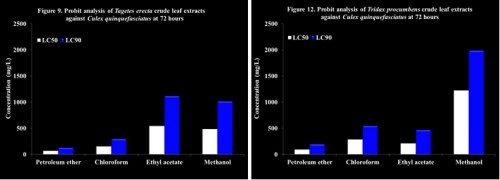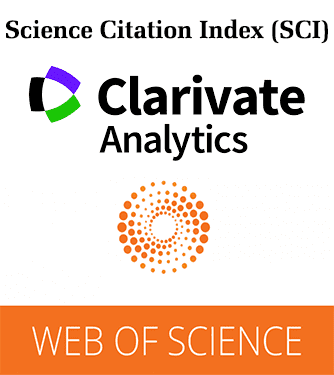Vol. 3, Issue 3, Part A (2016)
Laboratory evaluation of Asteraceae species Tagetes erecta Linnaeus and Tridax procumbens Linnaeus for their toxicity against the larvae of Culex quinquefasciatus Say 1823 (Diptera: Culicidae)
Author(s): Murugesan Sakthivadivel, Palani Gunasekaran, Gyurme Tenzin, Thanikachalam Saravanan, Rajasingh Raveen, Subramanian Arivoli, John William and Samuel Tennyson
Abstract: Mosquitoes are insects renowned as a major health problem since they are important vectors of several diseases like malaria, yellow fever, dengue, chikungunya, filariasis, encephalitis, West Nile virus, Zika virus fever, etc., in tropical and subtropical countries of the world. Culex quinquefasciatus is the principal vector of lymphatic filariasis and additionally, it can transmit Japanese encephalitis virus. Application of chemical insecticides, though undesirable, is still the major tool adopted globally for mosquito control but has reflected in various drawbacks. In the current era, research is focused on natural products to combat these disease transmitting vectors and a recent emphasis has been placed on plant material. Plants enriched with phytochemicals are reported to possess insecticidal properties particularly mosquitocidal. Therefore, in the present study, the larvicidal efficacy of crude petroleum ether, chloroform, ethyl acetate and methanol extracts of Tagetes erecta flowers and Tridax procumbens aerial parts against Culex quinquefasciatus was studied at concentrations of 62.5, 125, 250, 500 and 1000mg/L. Larval mortality was assessed 24, 48 and 72 hours after treatment. The results revealed that the crude petroleum ether extract of Tagetes erecta flowers and Tridax procumbens aerial parts showed the highest larvicidal activity than the other extracts tested. One hundred per cent larval mortality was observed in petroleum ether flower extract of Tagetes erecta at 500mg/L and at 1000mg/L in Tridax procumbens aerial parts after 24 hours. The LC50 values of crude petroleum ether flower extract of Tagetes erecta was 128.33 and 91.58 and for aerial extract of Tridax procumbens it was 70.51 and 52.70mg/L after 24 and 48 hours, respectively. Among the two plant species tested, Tagetes erecta was found to show higher activity as its LC50 value was marginally less than the LC50 value of Tridax procumbens after 24 and 48 hours treatment. Further investigations are needed to elucidate this activity against a wide range of all stages of mosquito species and also the active ingredient(s) of the extract responsible for larvicidal activity should be identified.
Related Graphics: Click here for more related graphics

Fig.: .
Pages: 35-46 | 2567 Views 308 Downloads
How to cite this article:
Murugesan Sakthivadivel, Palani Gunasekaran, Gyurme Tenzin, Thanikachalam Saravanan, Rajasingh Raveen, Subramanian Arivoli, John William, Samuel Tennyson. Laboratory evaluation of Asteraceae species Tagetes erecta Linnaeus and Tridax procumbens Linnaeus for their toxicity against the larvae of Culex quinquefasciatus Say 1823 (Diptera: Culicidae) . Int J Mosq Res 2016;3(3):35-46.







